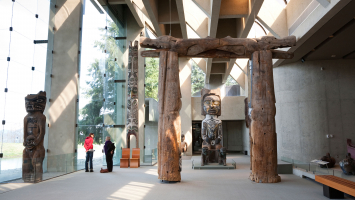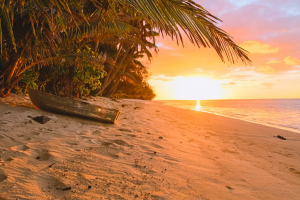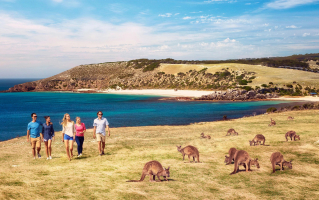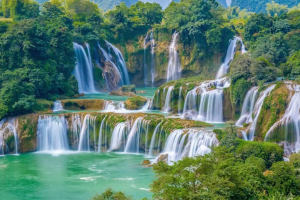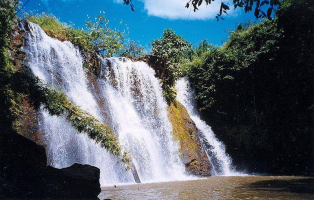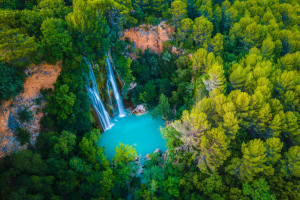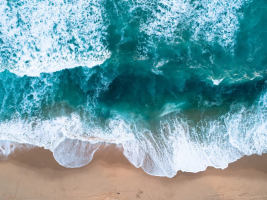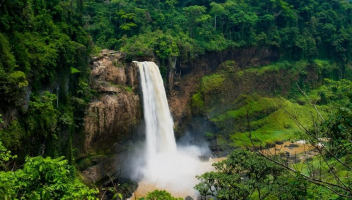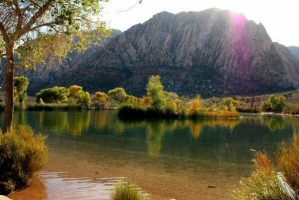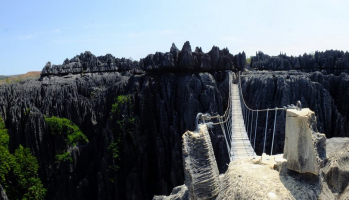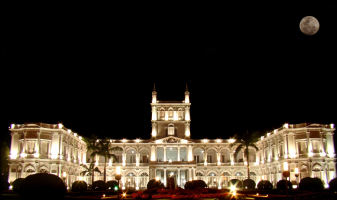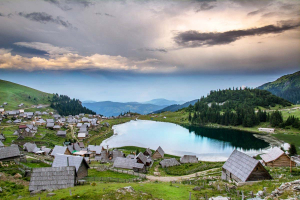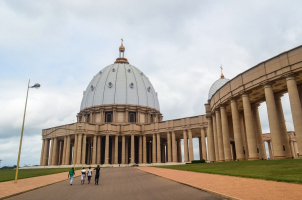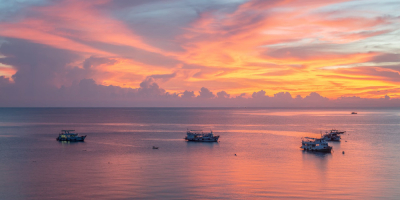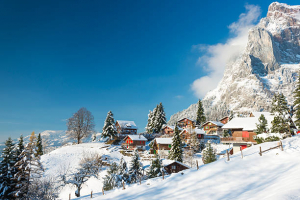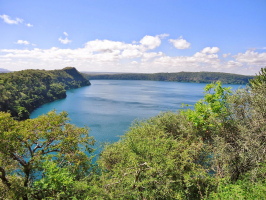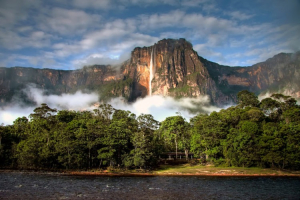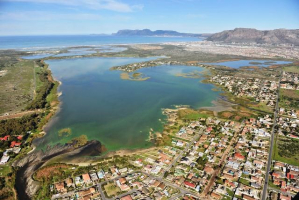Top 11 Best Waterfalls To Visit in Australia
Australia is a country with many beautiful landscapes, especially waterfalls. It is an ideal destination for domestic and foreign tourists. Let's discover the ... read more...best waterfalls to visit in Australia!
-
Mitchell Falls is situated in Mitchell River National Park. The four-tiered Mitchell Falls, one of Australia's most breathtaking waterfalls, is a must-see Kimberley destination.
You may fly over these magnificent waterfalls to see them or hike the trail down to the falls to see them up close. Your trip to Mitchell Falls will be an unforgettable one no matter which route you take. At the campground's trailhead, where visitors can find helpful rock art and route notes, the Punamii-Uunpuu walking track to Mitchell Falls begins. The 8.6km roundtrip hike is moderate to challenging, requiring some rock hopping and having some places with little to no shade. For the return trip, allow four to six hours, considering the time spent at the Falls.
Although swimming is prohibited below the falls, there are some excellent swimming holes along the walk caution when walking, especially near cliff edges.
Location: Kimberley Region, Western Australia, Australia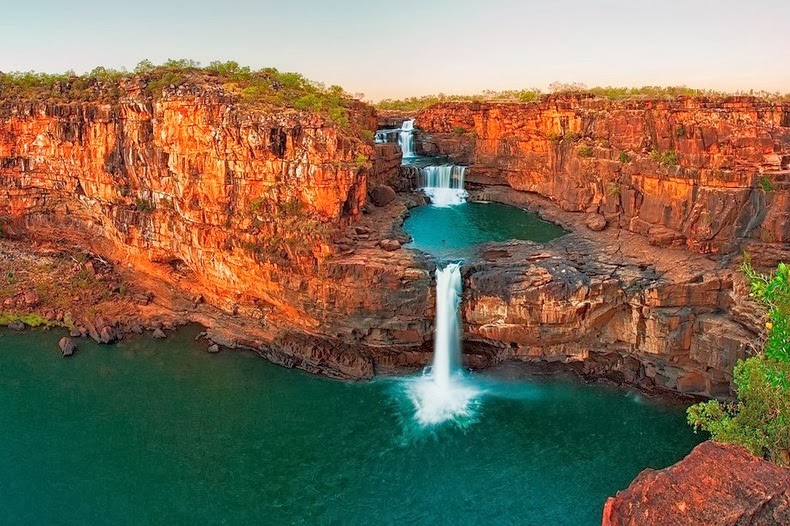
Photo: amusingplanet.com 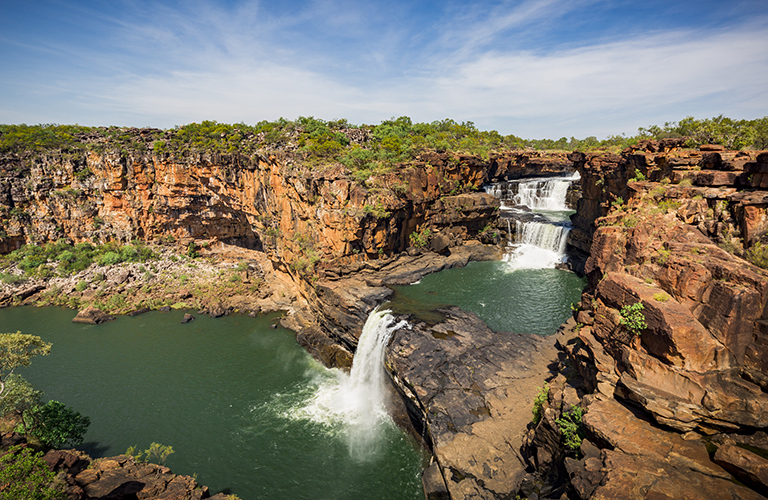
Photo: aviair.com.au -
The Jim Jim Falls is a plunging cascade on the Jim Jim Creek that flows through the UNESCO-designated Kakadu National Park in the Northern Territory of Australia and descends over the Arnhem Land escarpment. The region around Jim Jim Falls is listed as Australian National Heritage.
The waterfall plunges into a plunge pool within the creek from a height of 259 meters above sea level via a single drop that varies in height from 140 to 200 meters. Towards the Jim Jim Falls region, it ranges from vertical cliffs to tiered cliffs and isolated outliers in the north.
The waterfall, with its 200m height among vibrant cliffs, was undoubtedly a breathtaking sight. When the water roars over the drop during the rainy season and the road are impassable, view it from the air. To get near the falls when they are only a trickle, take the arduous drive in the dry weather. Observe how the white sand beaches contrast with the crimson ochre of the Arnhem Land escarpment. Swimming in the plunge pool's glistening clean water is worth the 900-meter trek across the rocks. This is one of the best waterfalls to visit in Australia.
Location: Kakadu National Park, Northern Territory, Australia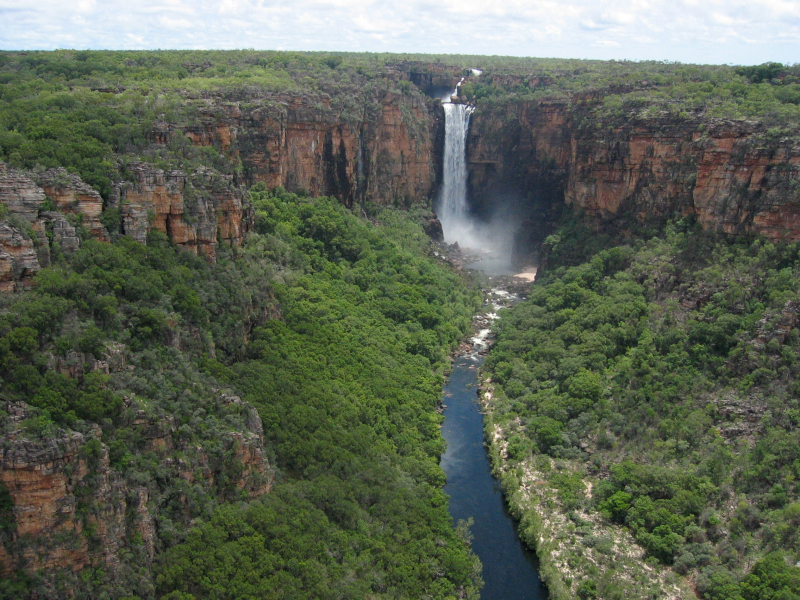
Photo: wikimedia commons 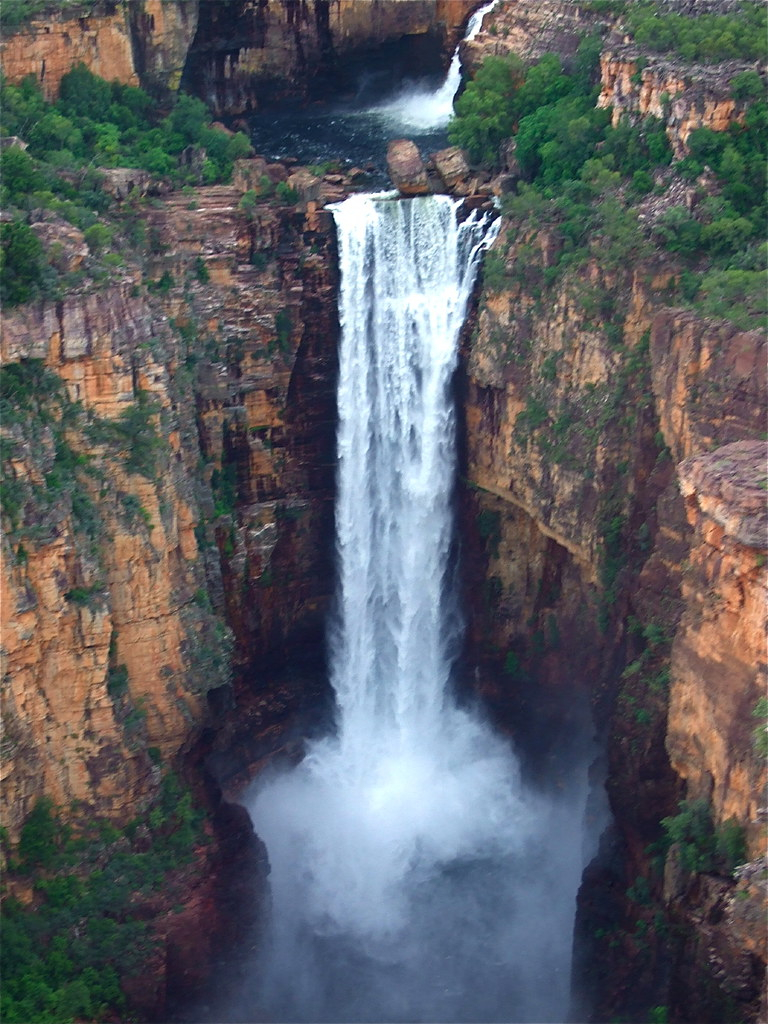
Photo: Flickr -
A settlement called Fitzroy Falls may be found in the Wingecarribee Shire of New South Wales, Australia's Southern Highlands. Originally called Yarrunga, the area now goes by its 81-meter (266-foot) waterfall.
The native Wodi Wodi people were aware of the waterfall. Charles Throsby, who arrived in the early 19th century, was the first European to observe it. The waterfall in Morton National Park was given Sir Charles Fitzroy's name in honor of him because he visited the region in 1850 and was located close to Yarrunga Creek's head.
Although a town was envisioned for the area in the 1860s, little progress was made. Fitzroy Falls became and still is a well-liked rest stop for travelers heading to the Southern Highlands after the invention of the automobile. Along with extensive parking and dining options, accessible tourists can observe the falls and other natural attractions from pathways and boardwalks.
Fitzroy Falls to Kangaroo Valley is a problematic 30-kilometer cycling path that connects the falls with the settlement of Kangaroo Valley, which is tucked away in one of Australia's most picturesque and remote valleys. You'll get a close-up look at breathtaking scenery and wallabies, kangaroos, and wildlife.
Location: Morton National Park, New South Wales, Australia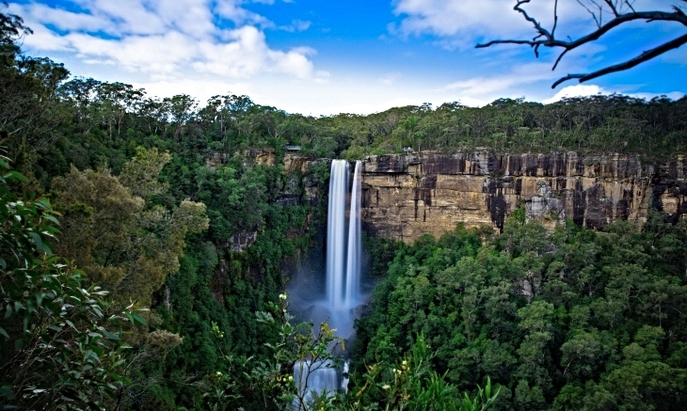
Photo: nationalparks.nsw.gov.au Video: Hiking Heaven -
One of Victoria's largest waterfalls, MacKenzie Falls, is a must-see when visiting Grampians National Park. The only year-round waterfall in the Grampians is this one. View MacKenzie Falls' splendor and force from a number of lookouts and walks that leave from the parking lot and are suitable for people of all fitness levels.
One of Victoria's biggest waterfalls is MacKenzie Falls. The year-round flow of the falls causes delicate rainbow mist sprays to rise far into the air above a breathtaking gorge. Water cascades down enormous rocks and into a deep pool. To see MacKenzie Falls up close and truly appreciate its size, set out on a challenging hike to the base of the cascade. As you observe, a beautiful rainbow mist forms in the air as the water softly flows down the sheer cliff face into the gorgeous pool below.
Swimming is not allowed at MacKenzie Falls despite how attractive it might look to go for a swim given the numerous concealed hazards in the water. Be ready for a challenging journey back up to the top of the falls given that the hike is 2 km roundtrip and you must descend 260 steep steps to reach the foot of the falls.
Location: Grampians National Park, Victoria, Australia
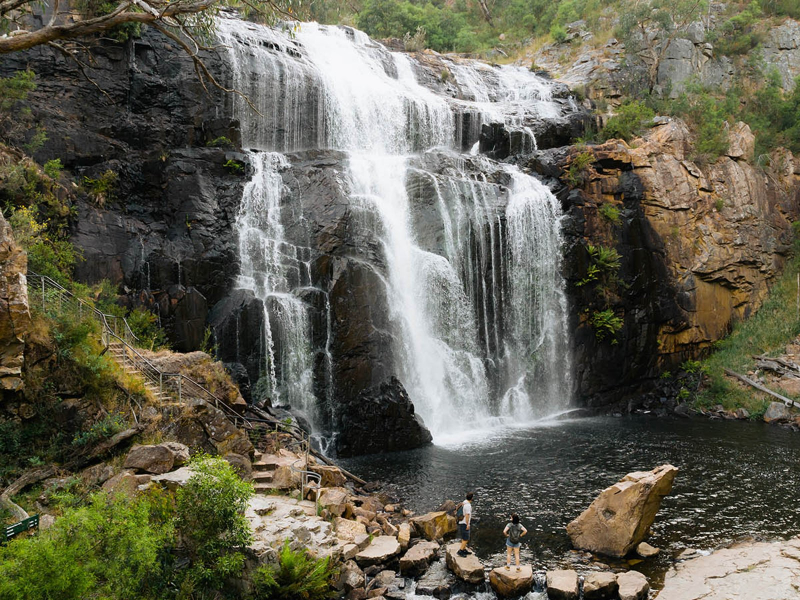
Photo: visitvictoria.com 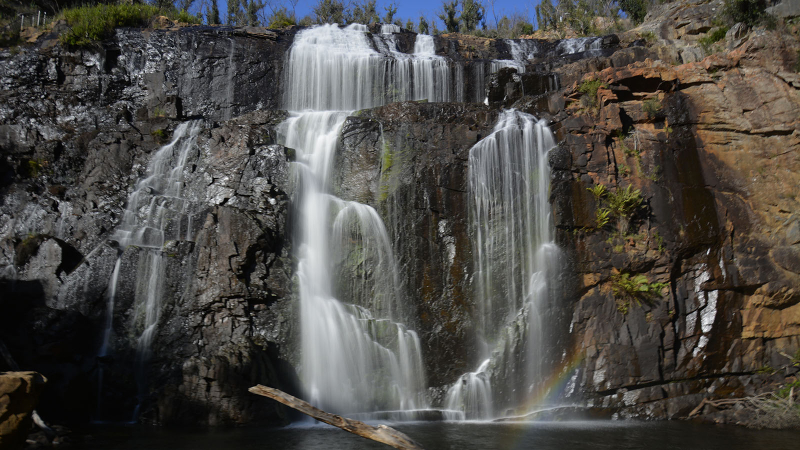
Photo: visitvictoria.com -
The Central Highlands region of Tasmania, Australia, is home to the Russell Falls, a multi-tiered cascade waterfall on the Russell Falls Creek. The Horseshoe Falls are 100 meters downstream of the Russell Falls, which are located on the eastern edge of Mount Field National Park and about 70 kilometers northwest of Hobart via the Brooker and Lyell motorways. The falls, which are reachable through a paved walking path, is a well-liked tourist destination. While the vertical walls of the falls are made up of hard sandstone layers, the waterfall descends across horizontal maritime Permian siltstone benches.
An accessible, sealed trail leads from the park visitor center to the base of Russell Falls. This short, simple walk (25 minutes round trip), one of Tasmania's 60 Great Short Walks, travels beneath towering mountain ash trees and a variety of other cool-temperate rainforest species.
An additional peculiar joy on this walk is revealed in the evening. A population of glow worms lives in a tiny cave before the falls. When you turn off your torch and allow the night to fall, their small blue lights emerge like an ethereal constellation of stars.
Location: Mt Field National Park, Tasmania, Australia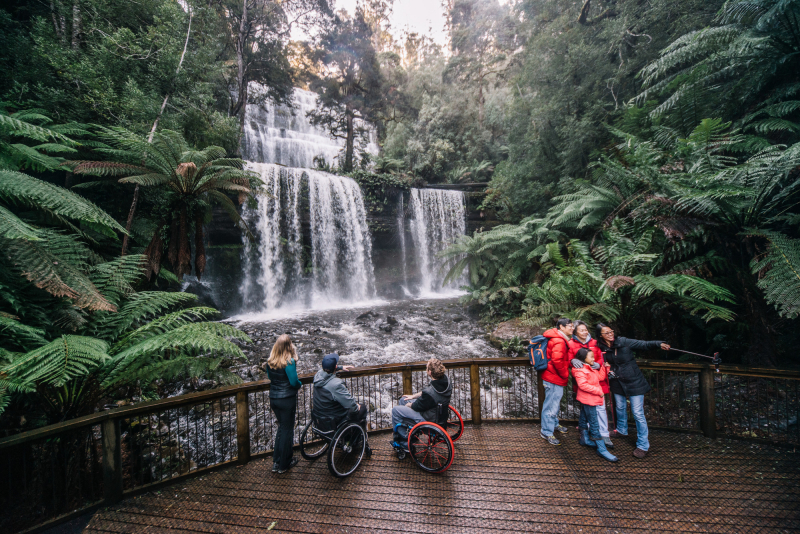
Photo: parks.tas.gov.au video: Caedence Kuepper -
On the Lyell Highway, Nelson Falls is located about 30 kilometers (km) east of Queenstown, Tasmania, and has great parking and easy access by foot to the waterfall. The walk from the parking lot is lovely, passing through a region-typically lush jungle. The accessibility to Nelson Falls is one of its outstanding features. Additionally, it is kid-friendly, making it the perfect place to stop on a road trip around Tasmania.
Brilliant "education signs" along the path to the waterfall encourage you to envision what the environment might have looked like hundreds of millions of years ago. The interpretive markers placed along the walk explain how the habitat has changed and how some of the plants that are thought to be unique to this region of Tasmania are actually ancient species that have endured thanks to the cool, temperate climate that the Nelson Valley rainforests demand.
There are only a few small steps on the well-maintained waterfall route, making it quite simple to reach Nelson Falls. Like virtually all waterfalls in Tasmania, Nelson Falls is most beautiful during the winter and spring months and is surrounded by a lush rainforest (June - October).
Location: Franklin-Gordon Wild Rivers National Park; 70km east of Strahan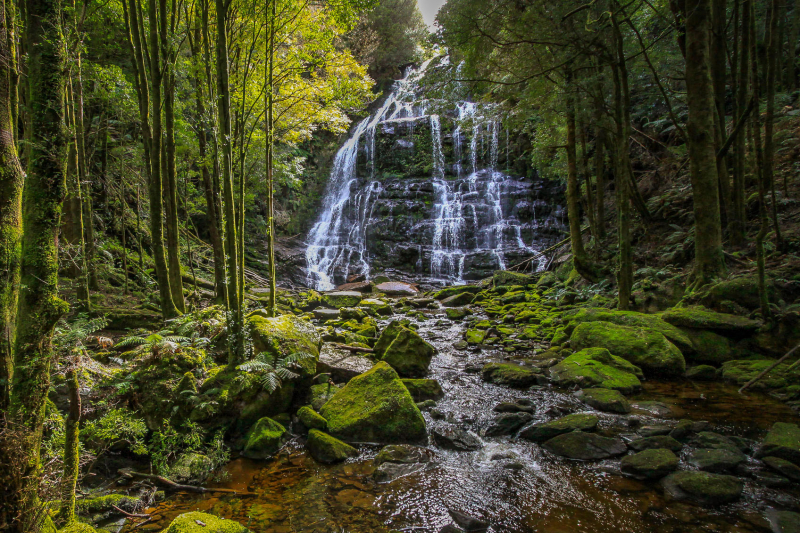
Photo: parks.tas.gov.au Video: Wander Explore Discover -
The Wallaman Falls, a cascade and horsetail waterfall on Stony Creek, is situated in the Wet Tropics, an area of northern Queensland, Australia, that has been recognized by UNESCO as a World Heritage Site. The waterfall is famous for its 268 meter main drop, making it the largest single-drop waterfall in the nation. The waterfall's bottom pool is 20 meters deep. Annual waterfall attendance is thought to be 100,000.
The formation's geological history dates back around 50 million years, when contemporary landforms were produced in the area by the uplift of the continental margin. The Herbert River, which had been flowing west, started to slash through the landscape on its way to the Coral Sea. At a rate of 40 centimeters (16 in) per hundred years, the gorge created by this erosive process progressively receded inland following the Herbert River's path. This movement finally left the river's tributaries suspended, creating their own gorges.
It was pretty simple for us to appreciate the falls and catch a few rainbows in excellent weather because they could be seen from a variety of locations across the gorge at the top and from their misty base (after the Djyinda Walk through some of the oldest rainforest in the world).
Location: Girringun (Lumholtz) National Park, Queensland, Australia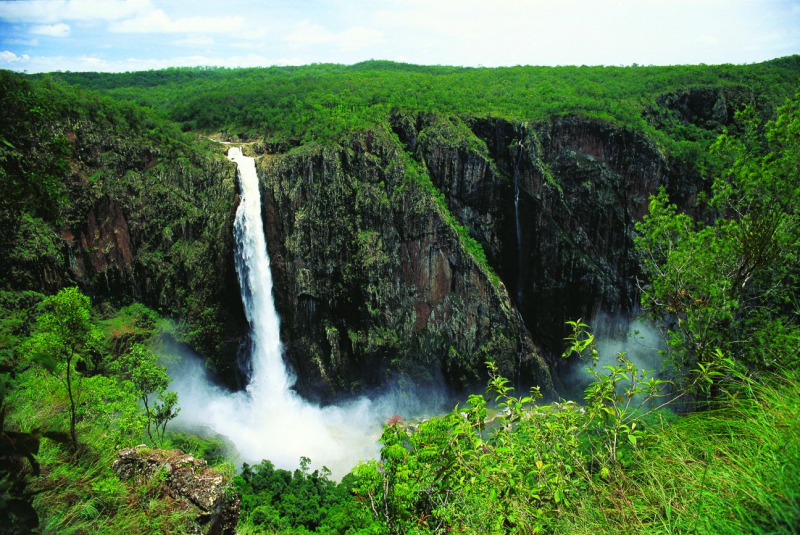
Photo: parks.des.qld.gov.au 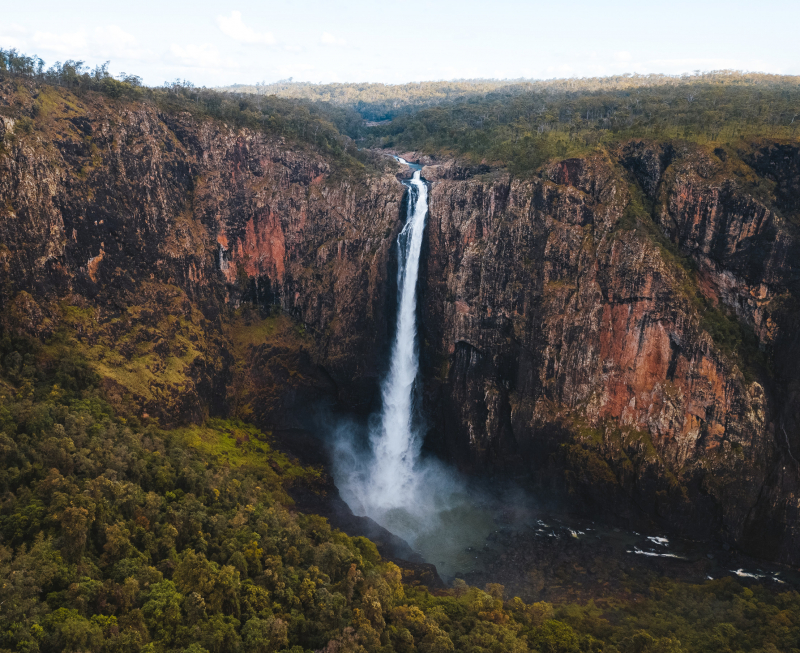
Photo: queensland.com -
With a height of 200 meters, Ellenborough Falls is one of the highest single-drop waterfalls in the southern hemisphere and the tallest in New South Wales. This is also one of the best waterfalls to visit in Australia and is a defining experience of the Barrington Coast's Manning Valley region. The Knoll can be reached by taking the timbered walkway for ten minutes as an alternative. This viewing area offers a top-to-bottom view of the waters of the Ellenborough River cascading into the ravine below and is located just across from the falls.
The fourth choice is the one that is most worthwhile. To reach the falls' base, you must descend 641 stairs, with rest stops along the way that you'll appreciate on the way back up. Splash some of the freezing water on your face to cool yourself. At the bottom is a rock pool that is misted by the water's spray.It's mesmerizing to see the cascade from the other side, which puts their diminutive human size into perspective. Observe the changing plants and foliage as you slowly make your way back up those stairs, and keep an eye out for the birds and other animals that call this wonderful location home.
Location: Greater Taree Region, New South Wales, Australia
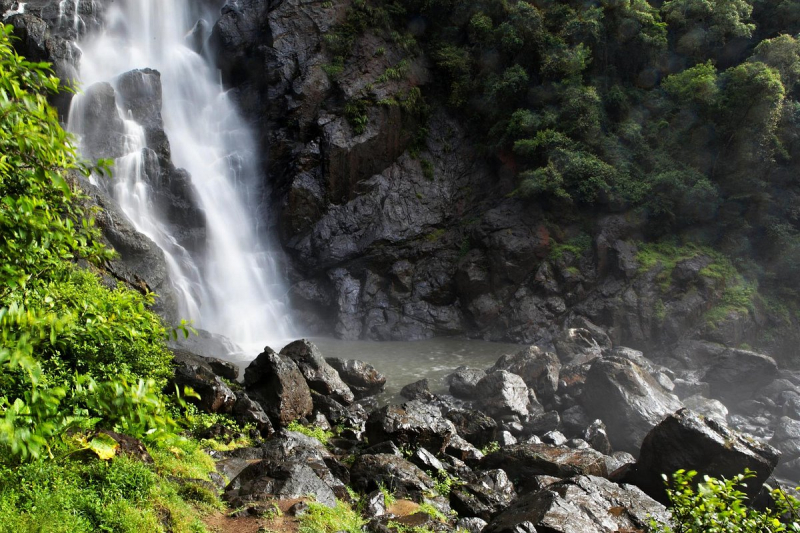
Photo: tripadvisor Video: Etchd Photography -
The Blencoe Falls are a series of waterfalls on Blencoe Creek in Queensland, Australia's Far North. The falls are located in the Girringun National Park close to Tully, about two kilometers north of where the Herbert River and Blencoe Creek converge. The falls start at a height of 517 meters above sea level and plummet 320 meters in the first drop of about 90 meters before continuing to cascade for another 230 meters to the bottom of the valley.
Open forest covers the towering cliffs and rocky ridges, and vine-thicket rainforest dotted with hoop pines covers the gullies and higher slopes of the canyon. A portion of the Wet Tropics World Heritage Area includes Blencoe Falls.
Camp out and take advantage of the quick hikes and viewpoints around Blencoe Falls. In addition, this is where the 110-kilometer-long network of pathways that serve as the entrance to the Wet Tropics Great Walk begins. Visitors to Blencoe Falls must be self-sufficient due to its isolation. Be careful around cliffs, steep slopes, and rock faces along the routes and at the overlook, and carry enough communication equipment. This waterfall is one of the best waterfalls to visit in Australia.
Location: Girringun (Lumholtz) National Park, Queensland, Australia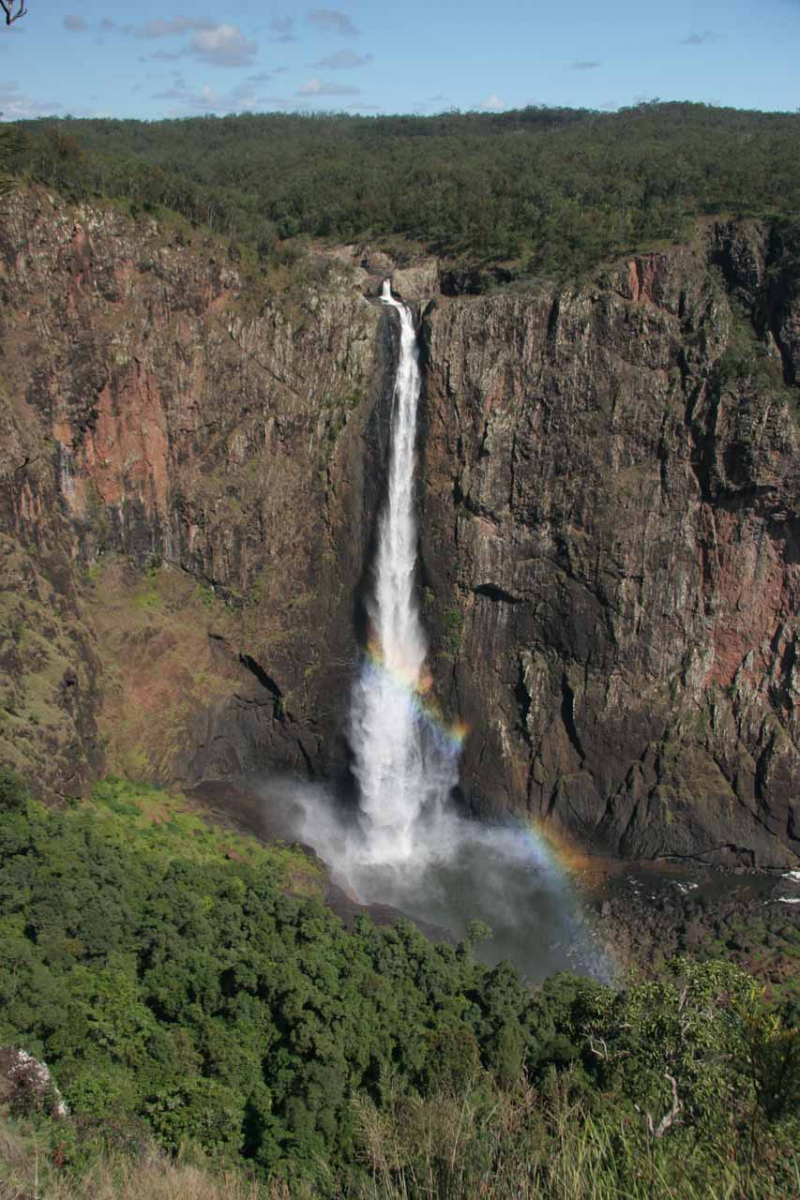
Photo: world-of-waterfalls.com Video: Live2Camp -
Montezuma Falls is the highest waterfall in Tasmania located close to Rosebery on the west coast. Two kilometers south of Rosebery, near Williamsford, the trail to the falls begins. You may reach the 104-meter falls' base on this short, three-hour round-trip hike through a lovely park-like rainforest with leatherwood, myrtle, sassafras, and gigantic tree ferns.
Along the walk, you might come across local animals, including many bird species. Right up to the base of Montezuma Falls, the track follows the former North East Dundas Tramway's old path. An old wooden trestle bridge measuring 160 feet long and 50 feet high originally spanned the creek directly below the falls. The only things that are left of this bridge today are rusted bolts, moss-covered concrete piers, and abandoned bits of wood.
Rosebery, which is close by, has restrooms, stores, and picnic areas. South of Burnie, in Rosebery, is a 90-minute journey. The waterfalls themselves are stunning, but you can also swim in the cool pools and, if you're feeling very brave, jump from some of them.Location: West Coast Council / near Rosebery, Tasmania, Australia
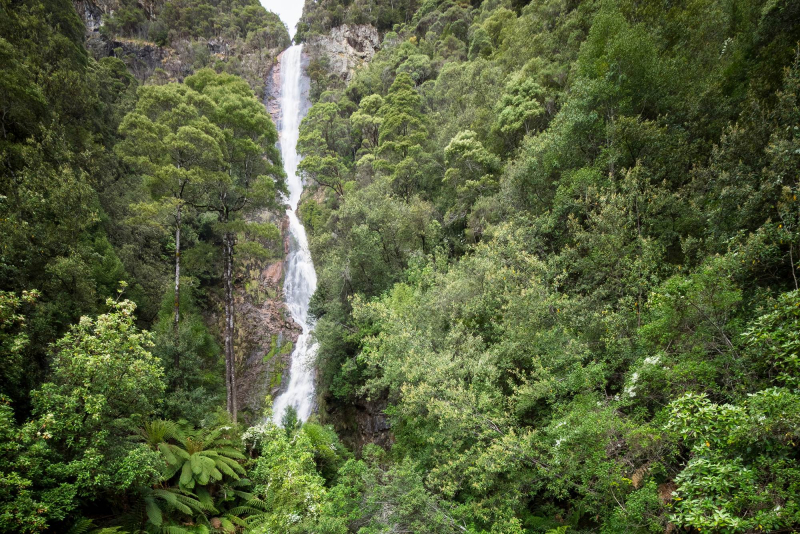
Photo: parks.tas.gov.au 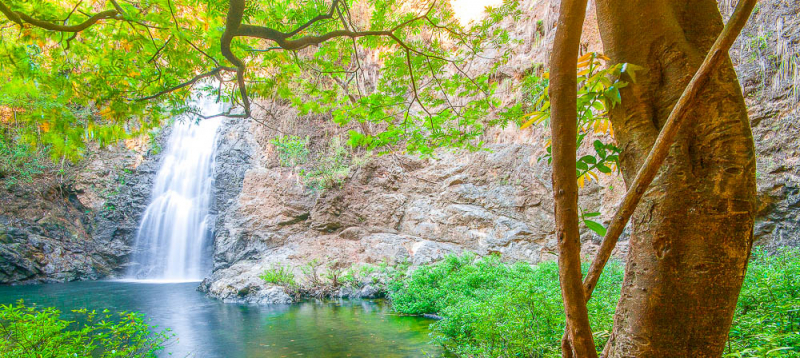
Photo: costarica.com -
On the Windolf bush walking track, there is a place called Southern Rockhole which is one of the best waterfalls to visit in Australia. From the parking lot, the distance through the bush is around 8 kilometers. The magnificence of the scenery throughout this route will wow you. You will be mesmerized by the waterfall and the spectacular sandstone boulders of the escarpment as you reach Southern Rockhole.
Near the top of the first gorge, there is a seasonal waterfall called Southern Rockhole. It takes 4 kilometers (one way) to walk to the Rockhole. Alternatively, you can take a ferry that runs seasonally, either one-way (with the option of walking one way) or return. You will be dropped off by the ferry 150 meters from the Rockhole, from where you must continue walking. The majority of the track needs rock-hopping because it is not a man-made path. As a result, a moderate level of mobility and fitness is needed. Only after the Rockhole has been made seasonally open is swimming allowed.
Location: Nitmiluk NT 0852, Australia
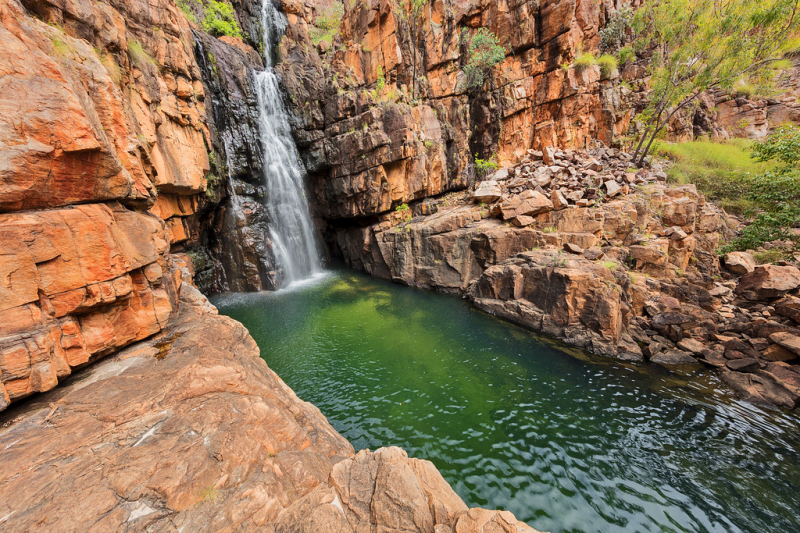
Photo: Flicrk 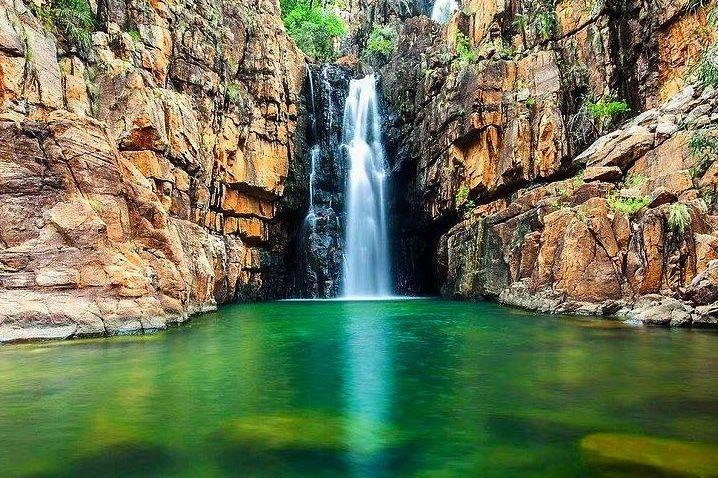
Photo: travel-booking.stuff.co.nz













